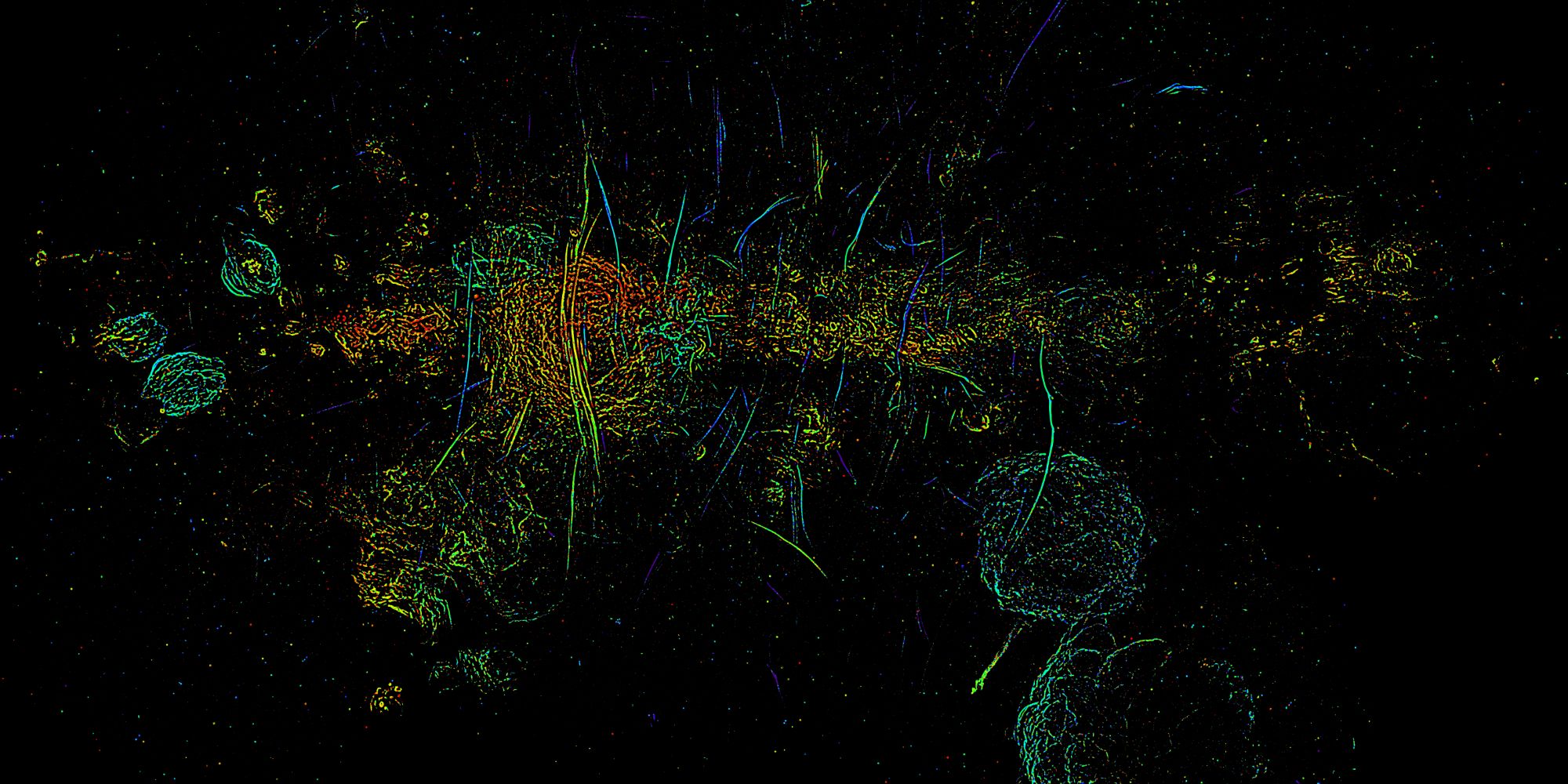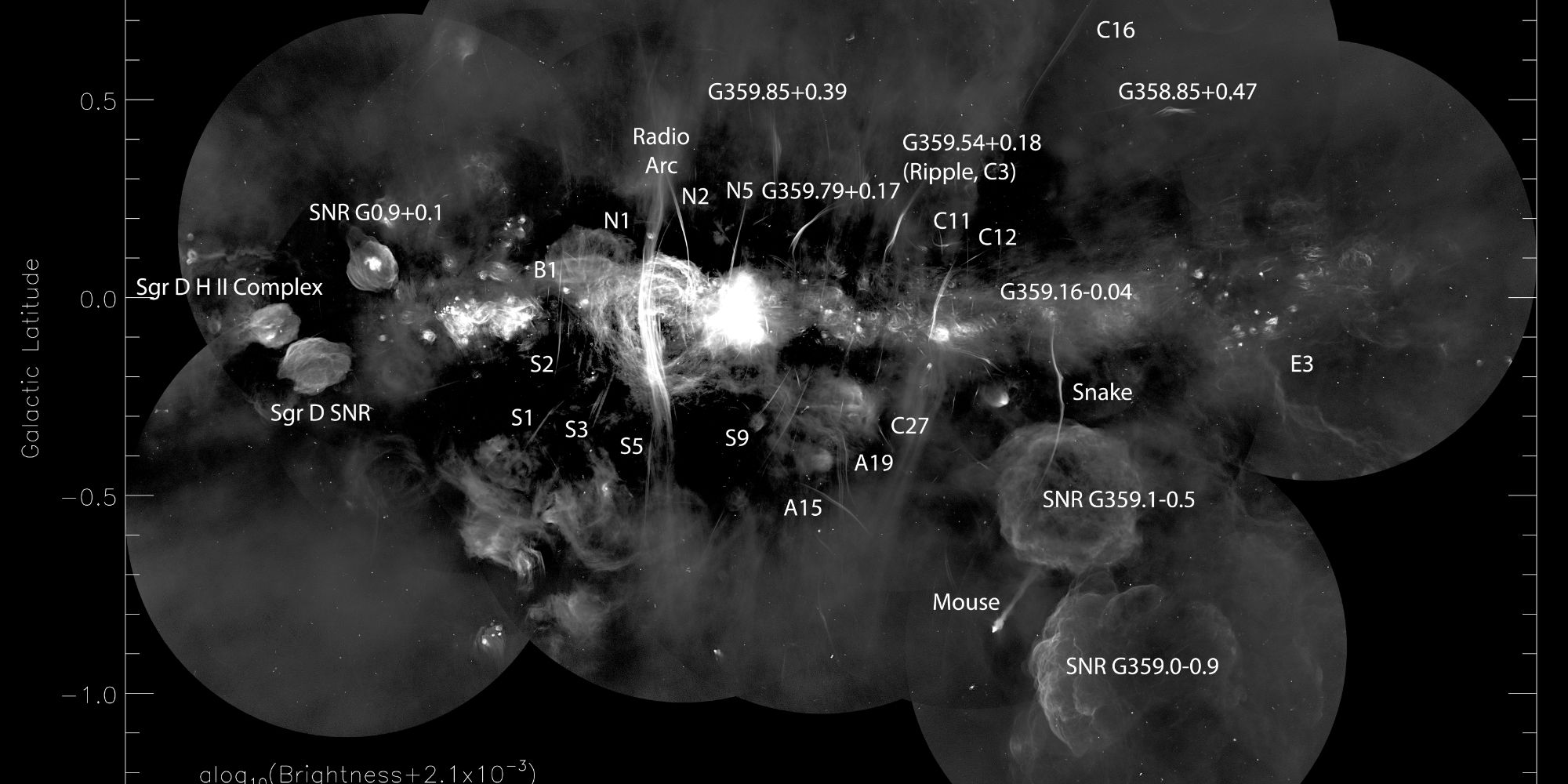
A new study has revealed almost 1,000 strands hiding in the center of the Milky Way, and it's a discovery that astronomers are absolutely stumped by. Ever since humans started looking up at outer space, we've been on a nonstop quest to understand everything about it. In some ways, that work has been successful. Astronomers have determined the age of the universe, discovered thousands of exoplanets, and sent numerous rovers/probes to other worlds within our Solar System. It's all very exciting stuff.
Despite all of those accomplishments, there are still some discoveries that leave astronomers and scientists confused. Earlier this month, a deformed 'potato planet' emerged and stumped everyone with its truly confusing shape. A study from December 2021 also revealed that our understanding of the Milky Way may be totally wrong — calling into question what our galaxy really looks like. For all the advancements science has made, the universe keeps finding ways to surprise us.
And it looks like that's happened yet again. On January 26, Northwestern University revealed more perplexing information about the Milky Way. More specifically, a new telescope image shows hundreds of strands at the center of the galaxy. The strands were first discovered by astronomer Farhad Yusef-Zadeh in the 1980s, but this latest examination shows there are "10 times more filaments than previously discovered." The university says the strands are "mysterious" and describes them as "inexplicably dangling in space."

As it stands, astronomers have a fairly basic idea of what these strands may be. They're scattered about the center of the Milky Way in clusters and are quite large — some of which stretch up to 150 light-years. They also have a very organized structure, described as being "stacked equally spaced, side by side like strings on a harp." The odd strands are also filled with cosmic ray electrons which move their magnetic field so fast that it's reaching the speed of light.
As for the strands' origin, this new look at them is getting astronomers much closer to a reliable answer. It was originally believed the strands resulted from bursts of a nearby supernova. Thanks to differences in their radiation, however, the new thought is that the strands came from past activity of the Milky Way's supermassive black hole. This latest research also confirms to astronomers that the magnetic fields of the strands are amplified. As explained by astronomer Ian Heywood who worked on the project, "This is the first time we have been able to study statistical characteristics of the filaments. By studying the statistics, we can learn more about the properties of these unusual sources."
As much new information as this has revealed, there are still questions that remain. One of the biggest unknowns is how these strands appear. As mentioned above, their structure is shockingly organized and they're separated at "perfectly equal distances." It's also unclear what's causing the strands' electrons to move so quickly, or whether or not the strands move/change. These are all things that'll be answered in due time, but even with those lingering questions, this is still a big development in one of our galaxy's biggest mysteries. As Yusef-Zadeh puts it, "We’re hoping to get to the bottom of it, but more observations and theoretical analyses are needed. A full understanding of complex objects takes time.”
Source: Northwestern University
Comments
Post a Comment